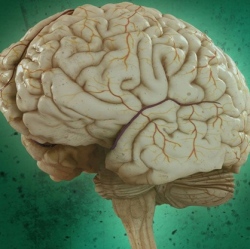
Scientists have invented a new type of brain scanner which can be worn on the head, allowing patients to move while being scanned. The device records the tiny magnetic fields generated by the brain. It could pinpoint the part of the brain responsible for activities like nodding, drinking tea and playing bat and ball.
Magnetoencephalography (MEG) has been around for decades, but conventional scanners are large, weighing half a ton. The sensors used to measure the brain’s magnetic fields have to be super-cooled to minus 269C.
The UK has 10 MEG scanners and their use is largely limited to research. Part of the problem is that subjects have to keep completely still.
The wearable MEG uses lightweight quantum sensors mounted in a 3D printed helmet.
The sensors work at room temperature and can be placed directly on the scalp, which greatly increases the signal they can pick up.
The wearable scanner means that babies, children and people with movement disorders can have their brain activity measured.
Matt Brookes, physicist, who leads the study at Nottingham University told me: "In terms of mapping brain activity, this represents a step change.
"Neuroscientists will be able to envisage a whole new world of experiments where we try to work out what the brain is doing but whilst a person is behaving naturally and moving around."
